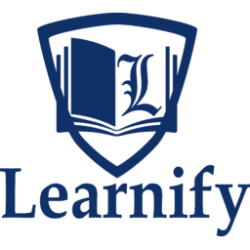REACH and CLP Regulations Training Course
Introduction
REACH (Registration, Evaluation, Authorisation, and Restriction of Chemicals) and CLP (Classification, Labelling, and Packaging) are critical EU regulations for managing chemicals’ safe use, protecting health, and preserving the environment. This course provides a comprehensive understanding of REACH and CLP, their requirements, and strategies for compliance in a global regulatory landscape. Participants will explore practical applications, risk management, and emerging challenges to ensure future readiness.
Course Objectives
By the end of this course, participants will:
- Understand the scope and requirements of REACH and CLP regulations.
- Learn about substance registration, evaluation, and authorization processes.
- Master the classification, labeling, and packaging of chemicals in compliance with CLP.
- Develop strategies to manage safety data sheets (SDS) and exposure scenarios.
- Prepare for inspections and audits related to chemical regulations.
- Address global harmonization and future challenges in chemical compliance.
Who Should Attend?
This course is ideal for:
- Regulatory affairs professionals
- Chemical manufacturers, importers, and downstream users
- Health, safety, and environment (HSE) managers
- Product stewardship and compliance officers
- Quality assurance and control professionals
- Anyone responsible for chemical safety and compliance
Advanced 5-Day Course Outline
Day 1: Overview of REACH and CLP Regulations
Session 1: Introduction to REACH and CLP
- Objectives and principles of REACH and CLP regulations
- Key responsibilities for manufacturers, importers, and users
Session 2: Scope and Applicability
- Identifying substances, mixtures, and articles covered by REACH and CLP
- Exemptions and special cases
Session 3: Key Terminologies and Stakeholders
- Key terms: SVHCs, DNELs, PBTs, and more
- Roles of ECHA and national authorities
Day 2: REACH Compliance: Registration, Evaluation, and Authorization
Session 1: Registration Process
- Pre-registration, data sharing, and dossier preparation
- Joint submissions and Substance Information Exchange Forums (SIEFs)
Session 2: Evaluation and Authorisation
- Substance evaluation process and decision-making
- Steps to secure authorisation for Substances of Very High Concern (SVHCs)
Session 3: Restriction of Hazardous Substances
- Understanding Annex XVII and applying restrictions
- Practical exercise: Identifying restricted substances in a case study
Day 3: CLP Compliance: Classification, Labelling, and Packaging
Session 1: Classification of Chemicals
- Harmonized classification under the Globally Harmonized System (GHS)
- Assessing physical, health, and environmental hazards
Session 2: Labeling and Packaging Requirements
- Designing compliant labels: Pictograms, signal words, and hazard statements
- Packaging considerations for hazardous substances
Session 3: Preparing and Updating Safety Data Sheets (SDS)
- Structure and content of SDS under REACH and CLP
- Practical workshop: Reviewing and improving an SDS
Day 4: Compliance Strategies and Risk Management
Session 1: Chemical Safety Assessments and Exposure Scenarios
- Conducting risk assessments and creating exposure scenarios
- Tools and resources for chemical safety management
Session 2: Managing Supply Chain Compliance
- Communication with upstream and downstream partners
- Ensuring compliance across global supply chains
Session 3: Inspections, Audits, and Non-Compliance Risks
- Preparing for regulatory inspections
- Addressing non-compliance and mitigating penalties
Day 5: Future Trends and Global Integration
Session 1: Emerging Challenges and Trends
- Adapting to changing regulations and new technologies
- Addressing microplastics, endocrine disruptors, and nanomaterials
Session 2: Global Harmonization and Compliance
- Alignment with non-EU regulations: TSCA (US), K-REACH (Korea), and others
- Practical strategies for multinational compliance
Session 3: Final Project: Developing a Compliance Roadmap
- Group activity: Creating a REACH and CLP compliance plan for a specific industry
- Presentations and peer feedback
Conclusion and Next Steps
- Certification of completion
- Access to templates, tools, and additional resources
- Networking opportunities with peers and industry experts

